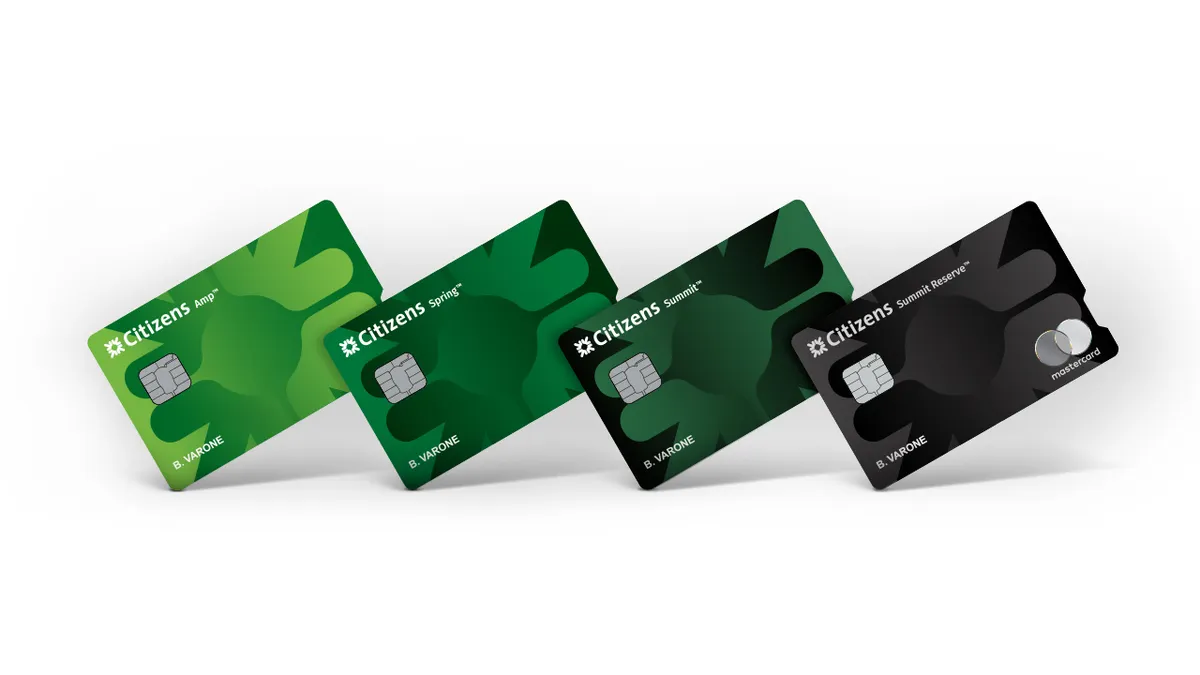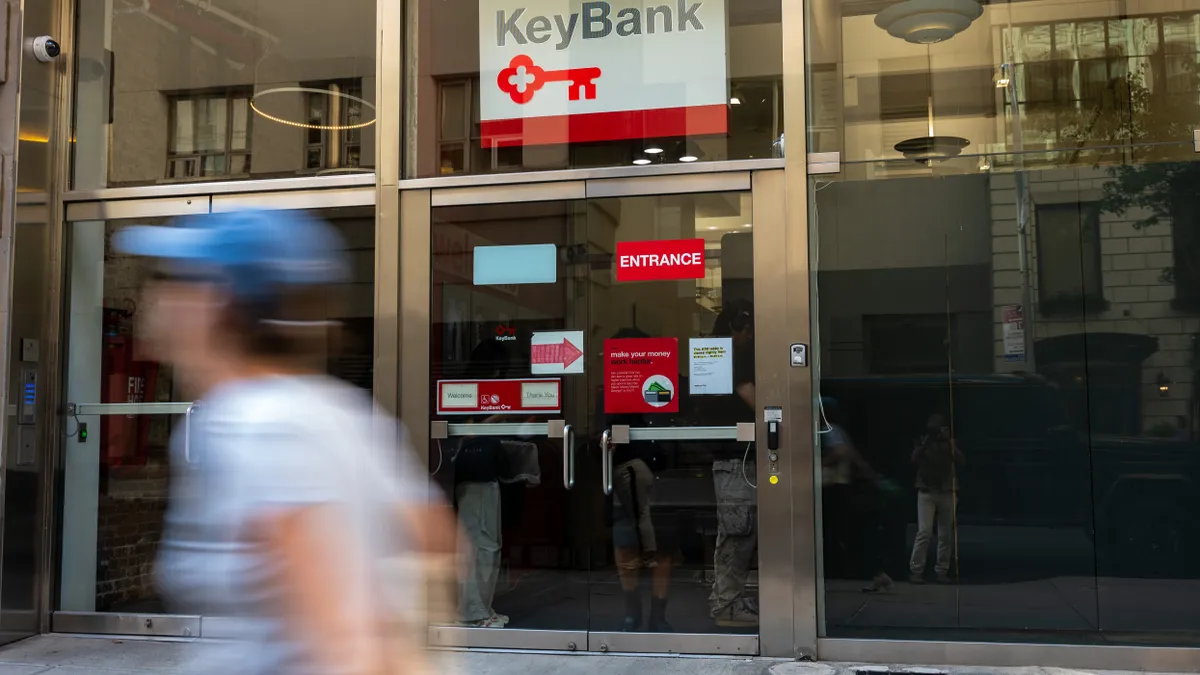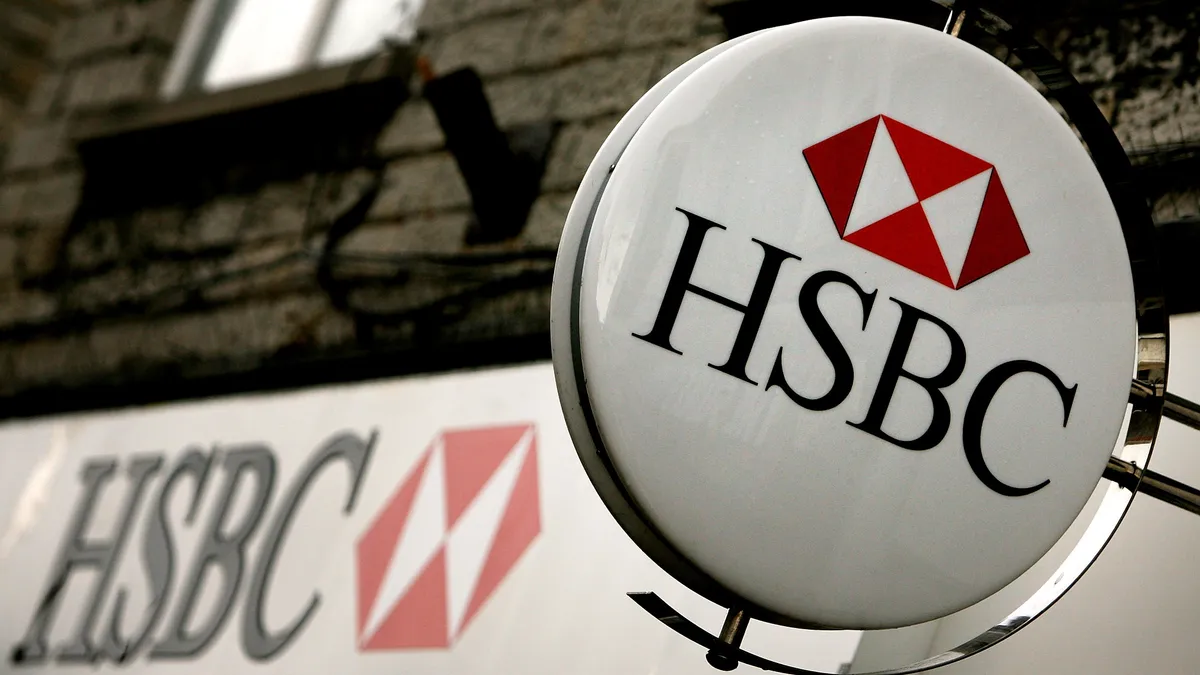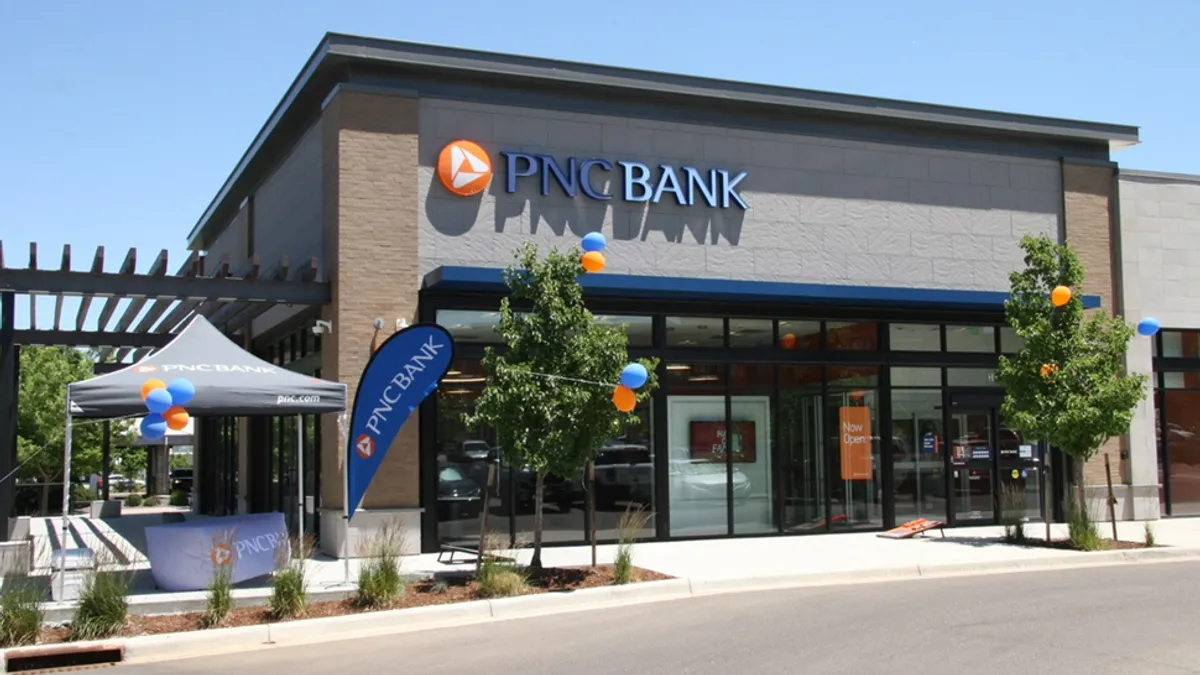Citizens Bank relaunched its credit card the same month JPMorgan Chase said it was refreshing and raising the annual fee for its Chase Sapphire Reserve card.
Adam Boyd, head of lending at Providence, Rhode Island-based Citizens, said that was coincidental but convenient.
“Every time a competitor increases an annual fee, there’s this backlash,” Boyd said.
Citizens aims to capitalize on opportunities such moves create for other card issuers, as premium card competition intensifies. The industry is seeing what Boyd referred to as a “gravitational pull” toward higher-end, fee-based cards, and the more big premium players like Chase, American Express and Capital One raise annual fees, the more space is created for other entrants between no- or low-fee cards at one end and premium products at the other end.
“It does create a little more room for us to compete in between,” Boyd said in a recent interview. “I do think other regionals will look at what we’re doing here in the card space and start to maybe think differently about their ability to compete. I would certainly expect more competition to come.”
Citizens has been in the credit card business for some time, but historically hasn’t invested heavily in it, Boyd said. Prior to the mid-June launch of its new credit card suite, the $220 billion-asset bank had a couple of credit cards, but they weren’t top-of-wallet for customers. And the lender didn’t offer a compelling product for some customer segments, such as higher-end, mass affluent consumers, he said.

More broadly, the bank sought to double down on relationship-based business, deepening ties with its customers.
All of that led the bank to do a “soup-to-nuts overhaul” of its credit cards, Boyd said, designing new products, investing in new origination technology and enhancing the digital experience. The bank declined to provide a figure but said it was a “multi-year, multi-million-dollar investment.”
One of the cards is a new-to-credit product – another segment that’s new for Citizens – which is part of the bank’s effort to draw in younger consumers. Citizens’ rewards cards have tiered cash-back offerings – 3% on dining and groceries and 1.5% elsewhere – since that’s what the bank found a majority of its customer base was using, Boyd said.
The goal with the card relaunch was to develop something “that would incent customers to consolidate more business with us,” Boyd said. The bank’s fee-based, metal card offering various travel and experience perks is $295 annually, or $95 if customers maintain a premium checking account at the bank.
“For a regional issuer that is focused on serving the needs of our existing deposit customer base, it’s very, very difficult to compete with the likes of a Chase or Amex,” Boyd said. “The advantage we have is that we aren’t out there spending a lot of money on marketing, and a lot of money on introductory offers.” Instead, Citizens can invest more in card benefits and offer a premium product at a lower fee, he said.
Still, while it may be simpler for customers to manage multiple accounts in one place, the digital landscape has made it easy to stitch together the best offerings from various providers, Boyd noted.
“I think it puts the burden back on us, to really ensure that we have compelling solutions,” he said.
Citizens’ credit card business has about $2 billion in outstanding balances today, he said, but the bank’s existing customers have about $25 billion in balances outside Citizens.
“I don’t think it would be unrealistic for us to capture 7% to 10% of that opportunity over the next three to five years,” Boyd said, although “that requires a lot of things to go our way.”
Regional issuers haven’t had much success with fee-based cards, Boyd said. “There was a school of thought that felt like it was a very risky move for us to launch a fee-based product and invest in the Summit Reserve card in the way we did,” he said.
Initial sales have been better than expected, with the launch expected to serve as a growth accelerant to the card business, he said. Over time, credit cards are expected to become a larger piece of the lending pie for Citizens, although likely to remain relatively small compared to other businesses at the bank like home equity, he said.
Citizens’ credit card business is positioned for profitable growth this year, and the bank plans to keep it that way. Some competitors go out with “deliberately unprofitable offerings purely to drive relationship business,” such as 3% cash-back products, he noted.
“We’re not looking to use the card business as a loss leader,” he said.
The bank seeks to deliver profits in line with a typical card business – around 3.5% is a “reasonable” long-term target – while investing appropriately for growth, he said.
Next up: Since some of the fee-based card’s benefits are accessible through offline experiences, the bank is working through a plan to consolidate card benefits in the mobile app, so customers can self-serve there at any hour. Boyd expects that to be rolled out in the coming months.
“The competitive nature of the credit card business sort of forces you into this continuous improvement mindset,” Boyd said.
The lender will also start marketing the cards this month, focused primarily on cross-sell campaigns to existing Citizens customers. In terms of investment, the bank said its marketing efforts will fall on the smaller side compared to what larger national issuers typically invest, although Citizens didn’t specify a figure.





















